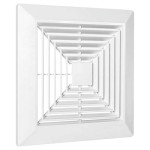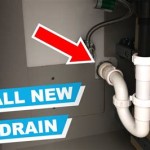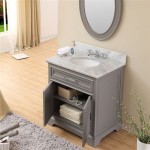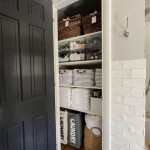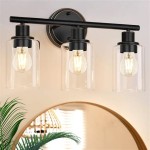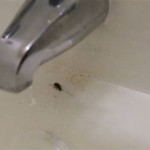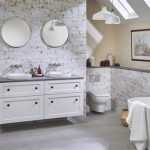How To Quickly Clean Your Bathroom for Optimal Hygiene
The bathroom, a space dedicated to personal hygiene, ironically becomes a breeding ground for germs, mold, mildew, and soap scum. Regular cleaning is essential not only for aesthetic appeal but also for maintaining a healthy living environment. While a deep clean might be necessary periodically, a quick clean can be implemented on a more frequent basis to prevent the build-up of grime and ensure the bathroom remains sanitary. This article provides a comprehensive guide to quickly and effectively cleaning a bathroom, focusing on efficiency and targeting key areas.
Before commencing, gather all the necessary cleaning supplies. This prevents unnecessary interruptions and allows for a streamlined process. Essential supplies include: all-purpose bathroom cleaner, glass cleaner, toilet bowl cleaner, disinfectant wipes, microfiber cloths (multiple), a scrub brush (for grout and stubborn stains), a squeegee (optional, for shower doors), disposable gloves, and a trash bag. Having these items readily available saves time and ensures a thorough cleaning.
Ventilation is crucial. Open a window or turn on the exhaust fan. This helps to dissipate cleaning fumes and promotes air circulation, accelerating the drying process of surfaces after cleaning. Proper ventilation is particularly important when using strong cleaning agents.
Key Point 1: Efficient Fixture Cleaning
The fixtures in a bathroom, including the sink, toilet, and shower/tub, are high-touch areas that require frequent cleaning. The following steps outline an efficient approach to disinfecting and cleaning these elements.
Begin with the sink. Remove all items from the sink and countertop, such as soap dispensers, toothbrush holders, and personal care products. Spray the sink, countertop, and faucet with an all-purpose bathroom cleaner. Allow the cleaner to dwell for the recommended time specified on the product label—typically a few minutes. This allows the cleaner to break down soap scum and hard water stains. While the cleaner is dwelling, wipe down the items removed from the countertop with a disinfectant wipe to remove any accumulated germs. Re-wipe with a clean microfiber cloth to remove any residue.
After the dwell time, use a damp microfiber cloth to wipe down the sink, countertop, and faucet. For stubborn stains or buildup around the faucet, use a scrub brush with gentle pressure. Rinse the sink thoroughly with water to remove any remaining cleaner residue. Dry the sink and countertop with a clean, dry microfiber cloth to prevent water spots. Replace the items that were removed from the countertop, ensuring they are dry and clean.
Proceed to the toilet. Apply toilet bowl cleaner to the inside of the toilet bowl, ensuring it coats the entire surface. Allow the cleaner to dwell for the recommended time. While the cleaner is dwelling, use a disinfectant wipe to clean the exterior of the toilet, starting with the handle and working down to the base. Pay particular attention to the areas around the seat and lid, as these are frequently touched. Use a separate disinfectant wipe for the inside of the toilet seat, if necessary.
After the dwell time, use a toilet brush to scrub the inside of the toilet bowl, paying attention to any stains or buildup. Flush the toilet to rinse away the cleaner and debris. Wipe down the exterior of the toilet again with a clean, damp microfiber cloth to remove any residual cleaner. Dry the exterior with a clean, dry microfiber cloth. For added hygiene, consider using disinfecting wipes on the toilet seat between uses.
The shower or tub requires different treatment depending on the materials and existing conditions. Spray the shower walls and floor with an all-purpose bathroom cleaner designed for shower use. Allow the cleaner to dwell. If there's significant mildew, a cleaner specifically designed to remove mildew may be necessary. During the dwell time, clean the showerhead by wiping it down with a disinfectant wipe or spraying it with a limescale remover, especially if hard water is a problem.
After the dwell time, use a microfiber cloth or a scrub brush to clean the shower walls and floor. Pay particular attention to the grout lines, as these are prone to mildew growth. For stubborn stains, a grout brush and a specialized grout cleaner may be required. Rinse the shower thoroughly with water to remove all traces of cleaner. Use a squeegee to remove excess water from the shower walls and door to prevent water spots and mildew growth. Dry the shower fixtures with a clean microfiber cloth.
Key Point 2: Targeting Mirrors and Glass Surfaces
Mirrors and glass surfaces in the bathroom are prone to streaks and water spots, which can detract from the overall cleanliness of the space. A quick and effective cleaning routine is necessary to maintain their clarity.
Spray the mirror or glass surfaces with a glass cleaner. Use a generous amount of cleaner to ensure the entire surface is covered. Avoid using excessive amounts of cleaner, as this can lead to streaks and difficult drying. If the mirror has significant buildup of hairspray or other products, pre-treat the area with a damp cloth before applying the glass cleaner.
Use a clean, dry microfiber cloth to wipe down the mirror or glass surface. Start from the top and work your way down, overlapping each stroke to ensure complete coverage. Use a clean section of the cloth for each pass to prevent smearing. If streaks persist, try using a different microfiber cloth or a squeegee. A squeegee can provide a streak-free finish, especially on large mirrors and shower doors.
For stubborn streaks, try using a solution of equal parts white vinegar and water. Vinegar is a natural cleaning agent that can effectively remove hard water stains and soap scum. Apply the vinegar solution to the mirror or glass surface and wipe it down with a clean microfiber cloth. Alternatively, crumpled newspaper can be used as a cleaning material for a streak-free shine.
Key Point 3: Floor Cleaning Fundamentals
The bathroom floor is exposed to moisture, spills, and tracked-in dirt, making it a crucial area to clean regularly. Different flooring materials require specific cleaning approaches.
Begin by sweeping or vacuuming the bathroom floor to remove any loose dirt, hair, or debris. This step is essential to prevent spreading the dirt around during the mopping process. Pay particular attention to the corners and edges of the room, as these areas tend to accumulate dust and debris.
Prepare a cleaning solution according to the flooring type. For tile floors, an all-purpose cleaner diluted in water is usually sufficient. For laminate or wood floors, use a cleaner specifically designed for those materials to avoid damaging the finish. Avoid using excessive amounts of water, as this can seep into the seams and cause damage.
Mop the bathroom floor thoroughly, paying attention to areas with visible stains or spills. Use a damp mop, not a soaking wet one, to prevent water damage. Overlapping each stroke ensures complete coverage and removes all dirt and grime. For stubborn stains, allow the cleaning solution to dwell on the area for a few minutes before mopping again. A scrub brush may be helpful for particularly difficult stains or in grout lines.
Rinse the floor with clean water if necessary. Some cleaning solutions leave a residue that can attract dirt. If rinsing is required, use a clean mop and fresh water. Ensure all traces of the cleaning solution are removed.
Allow the floor to air dry completely. Open a window or turn on the exhaust fan to speed up the drying process. Avoid walking on the floor until it is completely dry to prevent tracking dirt and leaving footprints. Regularly vacuuming or sweeping the bathroom floor helps to prevent the build-up of dirt and debris, making the mopping process easier.
Once the cleaning is complete, empty the trash bag and replace it with a fresh one. Gather all the used cleaning supplies and store them in a designated area. Check the bathroom for any missed spots or areas that require additional attention. A quick visual inspection ensures a thorough and effective cleaning.
Regular quick cleans, incorporated into a weekly routine, dramatically reduce the time and effort required for deep cleaning. By focusing on these key areas and implementing an efficient cleaning process, maintaining a sanitary and aesthetically pleasing bathroom becomes manageable. The frequency of these quick cleans should depend on bathroom usage and household size. A bathroom used by multiple people may require more frequent cleaning than one used by a single individual.

Quickly Clean Your Bathroom Bedroom Viva Towels

12 Easy Habits To Quickly Clean All In Your Bathroom Minimalism

How To Clean Your Bathroom In 5 Minutes Or Less

Quick Deep Cleaning S For Super Dirty Bathroom

Bathroom Spring Cleaning Checklist Clean And Scentsible

Quick Bathroom Clean Up

Clean Your Bathroom In 10 Minutes Quick Step By Guide

Quick Easy Bathroom Cleaning Tips Clean And Scentsible

Quick Tips For A Daily Bathroom Refresh Tailored Home Solutions

Day 4 How To Fake A Clean Bathroom Quick Cleaning Tips

